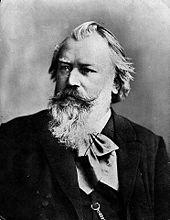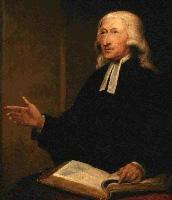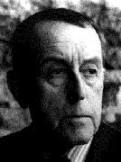Planning worship?
Check out our sister site, ZeteoSearch.org,
for 20+ additional resources related to your search.
- |
User Links
Person Results
Ignaz Franz
1719 - 1790 Topics: Year A, Ordinary Time after Pentecost, September 4-10 Versifier of "Psalm 149 (A Responsorial Setting)" in Psalms for All Seasons Ignaz Franz Poland 1719-1790. Born at Protzau, Silesia, he studied in Glaz andf Breslau. In 1742 he became a Roman Catholic priest. He served as chaplain at Gross-Glogau and vicar of Glogau in Silesia. In 1753 he was appointed archpriest at Schlawa, and assessor to the apostolic vicar's office in Breslau in 1766. He also functioned as the Assessor for Theological Affairs at the Apostolic Vicariate. He wrote hymn lyrics and compiled religious music. His works include “Katholisches Gesangbuch” (1744). He died at Breslau.
John Perry
Ignaz Franz
Johannes Brahms

1833 - 1897 Topics: Year B, Ordinary Time after Pentecost, August 21-27; Year C, Ordinary Time after Pentecost, October 23-29 Composer of "[How dear to me is your dwelling place, O Lord]" in Psalms for All Seasons Johannes Brahms (German: [joˈhanəs ˈbʁaːms]; 7 May 1833 – 3 April 1897) was a German composer and pianist. Born in Hamburg into a Lutheran family, Brahms spent much of his professional life in Vienna, Austria. In his lifetime, Brahms's popularity and influence were considerable. He is considered one of the greatest composers in history.
See also in:
Wikipedia
Johannes Brahms
Ronald F. Krisman
Person Name: Ronald F. Krisman, b. 1946 Topics: Ordinary Time, Nineteenth Sunday B; Ordinary Time, Twentieth Sunday B Alterer of "I Am the Bread of Life (Yo Soy el Pan de Vida)" in Worship (4th ed.)
Ronald F. Krisman
Sylvia G. Dunstan
1955 - 1993 Person Name: Sylvia Dunstan, 1955-1993 Topics: 3rd Sunday in Ordinary Time Year A; 3rd Sunday in Ordinary Time Year B; 5th Sunday in Ordinary Time Year C Author of "You Walk Along Our Shoreline" in RitualSong After a brief, arduous battle with liver cancer, Canadian Sylvia Dunstan died in 1993 at the age of 38. For thirteen years, Dunstan had served the United Church of Canada as a parish minister and prison chaplain. She is remembered by those who knew her for her passion for those in need, her gift of writing, and her love of liturgy.
Sing! A New Creation
Sylvia G. Dunstan
Gordon Slater
1896 - 1996 Topics: Ordinary Time Week 6 Composer of "ST. BOTOLPH" in Hymns and Devotions for Daily Worship
Gordon Slater
Shannon Cerneka
b. 1975 Person Name: Shannon Cerneka, b. 1975 Topics: Year A, Ordinary Time after Epiphany, 9th Sunday; Year A, Ordinary Time after Pentecost, May 29-June 4 Author of "I Give My Spirit" in Psalms for All Seasons
Shannon Cerneka
Ann Griffiths
1776 - 1805 Topics: Ordinary Time Week 17 Author of "See, There Stands Among the Myrtles" in Hymns and Devotions for Daily Worship Griffiths, Ann, of Dolwar Fechan, Montgomeryshire, was born in 1776, and died in 1805. She composed many beautiful hymns, a collection of which was published (posthumously) in 1806, and also in 1808, under the title of "Hymnau o fawl i Dduw ac i'r oen" ("Hymns of Praise to God and the Lamb"). Several of her hymns rank with the best in the Welsh language. [Rev. W. Glanffrwd Thomas]
-- John Julian, Dictionary of Hymnology
=========================
Griffiths, Ann, p. 470, ii. A long account of this writer, and several translations into English of her hymns, are given in H. Elvet Lewis's Sweet Singers of Wales, R. T. S., 1889.
--John Julian, Dictionary of Hymnology, Appendix, Part II (1907)
Ann Griffiths
Owen Alstott
Topics: Seasonal Music Ordinary Time Author of "Blessed by Your Sacrifice" in Breaking Bread (Vol. 39)
Owen Alstott
John Wesley

1703 - 1791 Person Name: John Wesley, 1703-1791 Topics: Year B, Ordinary Time after Pentecost, October 30-November 5; Year B, Ordinary Time after Pentecost, September 4-10; Year C, Ordinary Time after Pentecost, June 5-11 (if after Trinity Sunday); Year C, Ordinary Time after Pentecost, September 25-October 1 Author of "I'll Praise My Maker While I've Breath" in Psalms for All Seasons John Wesley, the son of Samuel, and brother of Charles Wesley, was born at Epworth, June 17, 1703. He was educated at the Charterhouse, London, and at Christ Church, Oxford. He became a Fellow of Lincoln College, Oxford, and graduated M.A. in 1726. At Oxford, he was one of the small band consisting of George Whitefield, Hames Hervey, Charles Wesley, and a few others, who were even then known for their piety; they were deridingly called "Methodists." After his ordination he went, in 1735, on a mission to Georgia. The mission was not successful, and he returned to England in 1738. From that time, his life was one of great labour, preaching the Gospel, and publishing his commentaries and other theological works. He died in London, in 1791, in his eighty-eighth year. His prose works are very numerous, but he did not write many useful hymns. It is to him, however, and not to his brother Charles, that we are indebted for the translations from the German.
--Annotations of the Hymnal, Charles Hutchins, M.A., 1872
======================
John Wesley, M.A., was born at Epworth Rectory in 1703, and, like the rest of the family, received his early education from his mother. He narrowly escaped perishing in the fire which destroyed the rectory house in 1709, and his deliverance made a life-long impression upon him. In 1714 he was nominated on the foundation of Charterhouse by his father's patron, the Duke of Buckingham, and remained at that school until 1720, when he went up, with a scholarship, from Charterhouse to Christ Church, Oxford. Having taken his degree, he received Holy Orders from the Bishop of Oxford (Dr. Potter) in 1725. In 1726 he was elected Fellow of Lincoln College, and remained at Oxford until 1727, when he returned into Lincolnshire to assist his father as curate at Epworth and Wroot. In 1729 he was summoned back to Oxford by his firm friend, Dr. Morley, Rector of Lincoln, to assist in the College tuition. There he found already established the little band of "Oxford Methodists" who immediately placed themselves under his direction. In 1735 he went, as a Missionary of the Society for the Propagation of the Gospel, to Georgia, where a new colony had been founded under the governorship of General Oglethorpe. On his voyage out he was deeply impressed with the piety and Christian courage of some German fellow travellers, Moravians. During his short ministry in Georgia he met with many discouragements, and returned home saddened and dissatisfied both with himself and his work; but in London he again fell in with the Moravians, especially with Peter Bohler; and one memorable night (May 24, 1738) he went to a meeting in Aldersgate Street, where some one was reading Luther's preface to the Epistle to the Romans. There, "About a quarter before nine, while he was describing the change which God works in the heart through faith in Christ, I felt my heart strangely warmed. I felt I did trust in Christ, Christ alone, for salvation; and an assurance was given me, that He had taken away my sins, even mine, and saved me from the law of sin and death." From that moment his future course was sealed; and for more than half a century he laboured, through evil report and good report, to spread what he believed to be the everlasting Gospel, travelling more miles, preaching more sermons, publishing more books of a practical sort, and making more converts than any man of his day, or perhaps of any day, and dying at last, March 2, 1791, in harness, at the patriarchal age of 88.
The popular conception of the division of labour between the two brothers in the Revival, is that John was the preacher, and Charles the hymnwriter. But this is not strictly accurate. On the one hand Charles was also a great preacher, second only to his brother and George Whitefield in the effects which he produced. On the other hand, John by no means relegated to Charles the exclusive task of supplying the people with their hymns. John Wesley was not the sort of man to depute any part of his work entirely to another: and this part was, in his opinion, one of vital importance. With that wonderful instinct for gauging the popular mind, which was one element in his success, he saw at once that hymns might be utilized, not only for raising the devotion, but also for instructing, and establishing the faith of his disciples. He intended the hymns to be not merely a constituent part of public worship, but also a kind of creed in verse. They were to be "a body of experimental and practical divinity." "In what other publication," he asks in his Preface to the Wesleyan Hymn Book, 1780 (Preface, Oct. 20,1779), "have you so distinct and full an account of Scriptural Christianity; such a declaration of the heights and depths of religion, speculative and practical; so strong cautions against the most plausible errors, particularly those now most prevalent; and so clear directions for making your calling and election sure; for perfecting holiness in the fear of God?" The part which he actually took in writing the hymns, it is not easy to ascertain; but it is certain that more than thirty translations from the German, French and Spanish (chiefly from the German) were exclusively his; and there are some original hymns, admittedly his composition, which are not unworthy to stand by the side of his brother's. His translations from the German especially have had a wide circulation. Although somewhat free as translations they embody the fire and energy of the originals.
It has been the common practice, however for a hundred years or more to ascribe all translations from the German to John Wesley, as he only of the two brothers knew that language; and to assign to Charles Wesley all the original hymns except such as are traceable to John Wesley through his Journals and other works.
The list of 482 original hymns by John and Charles Wesley listed in this Dictionary of Hymnology have formed an important part of Methodist hymnody and show the enormous influence of the Wesleys on the English hymnody of the nineteenth century.
-- Excerpts from John Julian, Dictionary of Hymnology (1907)
===================
See also in:
Hymn Writers of the Church
John Wesley
Jacques Berthier

1923 - 1994 Person Name: Jacques Berthier, 1923-1994 Topics: Year B, Ordinary Time after Pentecost, October 30-November 5; Year B, Ordinary Time after Pentecost, September 4-10; Year C, Ordinary Time after Pentecost, June 5-11 (if after Trinity Sunday); Year C, Ordinary Time after Pentecost, September 25-October 1 Composer of "[Alleluia, alleluia, alleluia]" in Psalms for All Seasons Jacques Berthier (b. Auxerre, Burgundy, June 27, 1923; d. June 27, 1994) A son of musical parents, Berthier studied music at the Ecole Cesar Franck in Paris. From 1961 until his death he served as organist at St. Ignace Church, Paris. Although his published works include numerous compositions for organ, voice, and instruments, Berthier is best known as the composer of service music for the Taizé community near Cluny, Burgundy. Influenced by the French liturgist and church musician Joseph Gelineau, Berthier began writing songs for equal voices in 1955 for the services of the then nascent community of twenty brothers at Taizé. As the Taizé community grew, Berthier continued to compose most of the mini-hymns, canons, and various associated instrumental arrangements, which are now universally known as the Taizé repertoire. In the past two decades this repertoire has become widely used in North American church music in both Roman Catholic and Protestant traditions.
Bert Polman
Jacques Berthier


 My Starred Hymns
My Starred Hymns

